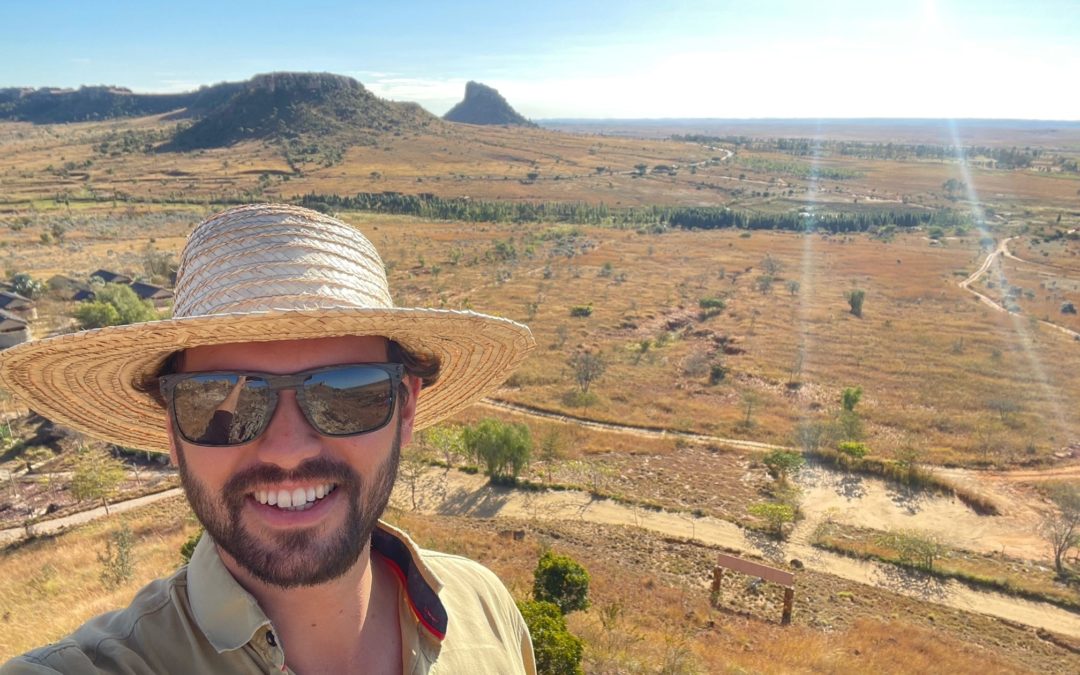As part of our ongoing efforts to improve our approach to ethical trading we have been exploring direct supply chains, researching conditions in producing countries, and seeing how we might be able to improve the situations we find, be them socio-economic or environmental. An area I have been focusing on is Madagascar as it is a country where a large impact can be made, and it is also a place where I am uniquely positioned due to the friends and family connections I have there. I had conducted a previous trip at the beginning of the year. This resulted in various opportunities, one of which was to support a sapphire mining project in the south of the island. The project was just starting to get underway, so it was a good time to return and find out what is going on. The sapphire mining areas of southern Madagascar are quite remote, and the experience was both challenging and rewarding.
The journey began with a series of tedious and delayed flights, eventually landing me in Antananarivo, affectionately known as Tana. This sprawling city, nestled amidst the hills of central Madagascar, boasts a pleasant climate but can be chaotic and disorganized. As the capital of one of the world’s poorest countries, Tana’s streets are lined with homeless. Discarded rubbish often accumulates, providing both sustenance for the needy and a playground for the ubiquitous stray dogs.
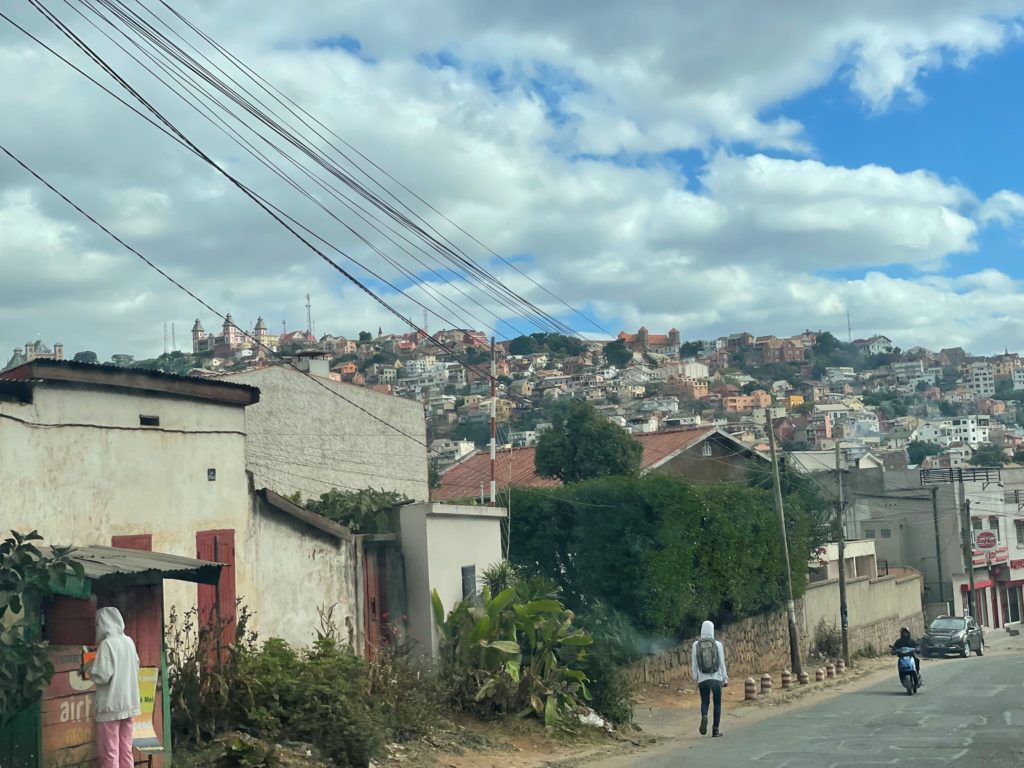
The hill of Analamanga, where the Rova (palace) of Antananarivo is located
Fortunate enough to stay with local friends, I was spared the daunting task of navigating the potentially dangerous and bewildering city alone. Our strategy involved reserving a hotel room that doubled as an office, serving as a neutral and secure space for business meetings. Here, a diverse array of local characters showcased their merchandise, ranging from stunning green apatite to synthetic sapphires – a product not produced in Madagascar, implying importation. Many items were wrongly identified, favouring the sellers, a practice I found telling. A few days were consumed by back-to-back meetings, leaving me both exhausted, but pleased with the selection of gemstones and specimens I purchased.
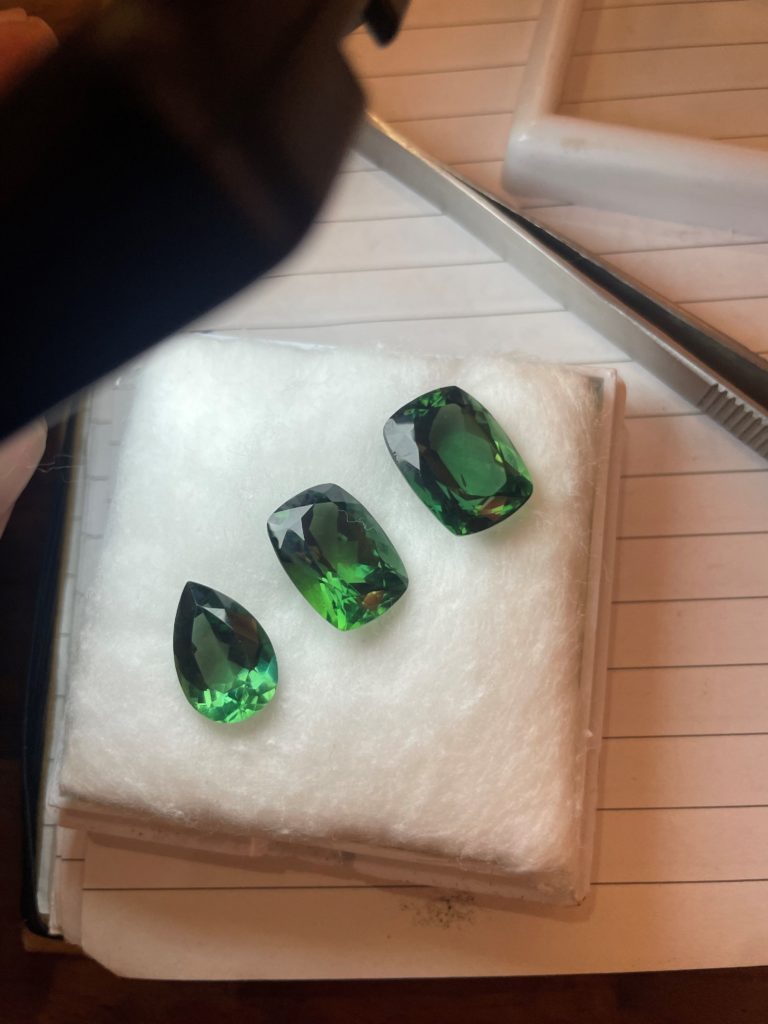
Incredible bright green apatite
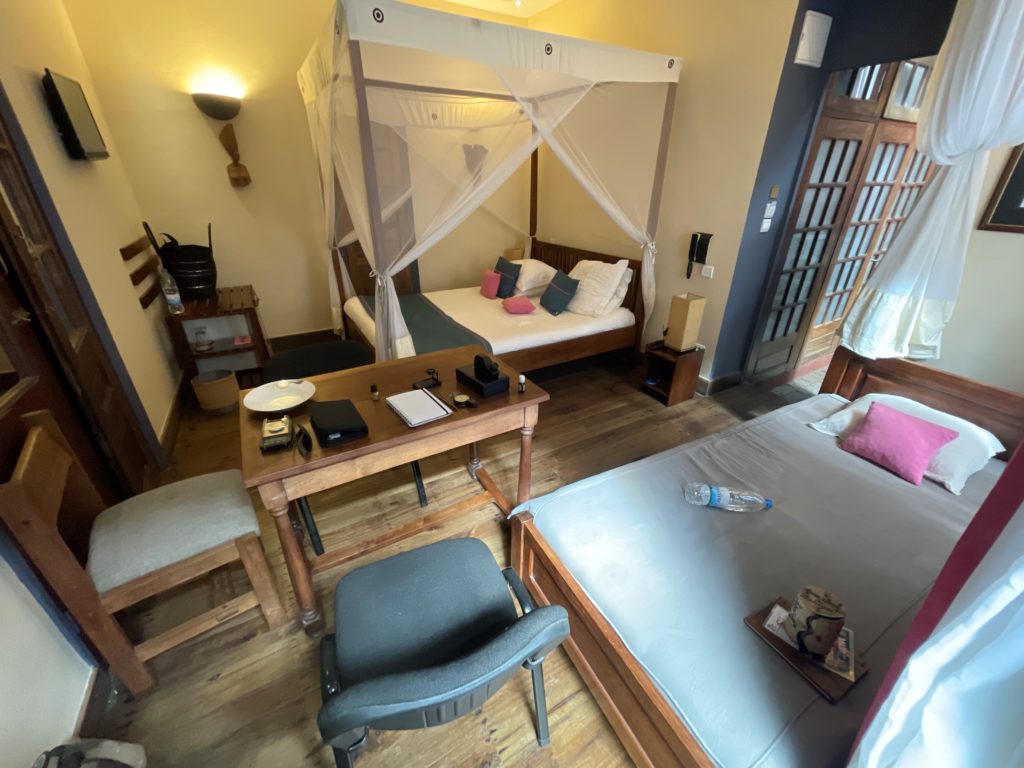
Our ‘office’ in Antannarivo
The following day heralded our journey to the mines, a gruelling three-day drive to the vicinity of the famed mining town, Ilakaka. Endless hours on dreadful roads brought us to Antsirabe, where we spent a night visiting my Aunt. She is Malagasy and a conservationist by education, she married my mother’s brother and as a result of this I have two cousins, one that lives in the UK and one in Madagascar. It was good to catch up with her and find out how various members of the very large family are doing.
Another stop in Fianarantsoa allowed us to confer with our mining operations manager, meet the rest of the team, and inspect equipment before its transport to the mines. Our final pre-mining halt occurred at Isalo National Park, a personal favourite. This awe-inspiring landscape, shaped by eons of erosion, features towering rock formations and steep canyons. Formed from sedimentary rock during the late Triassic period, one can imagine a luscious landscape filled with the burgeoning dinosaurs that began their meteoric rise to dominance during this period. While waiting for our convoy, we explored and gathered quartz crystals, enjoying our moment of leisure.

Isalo National Park
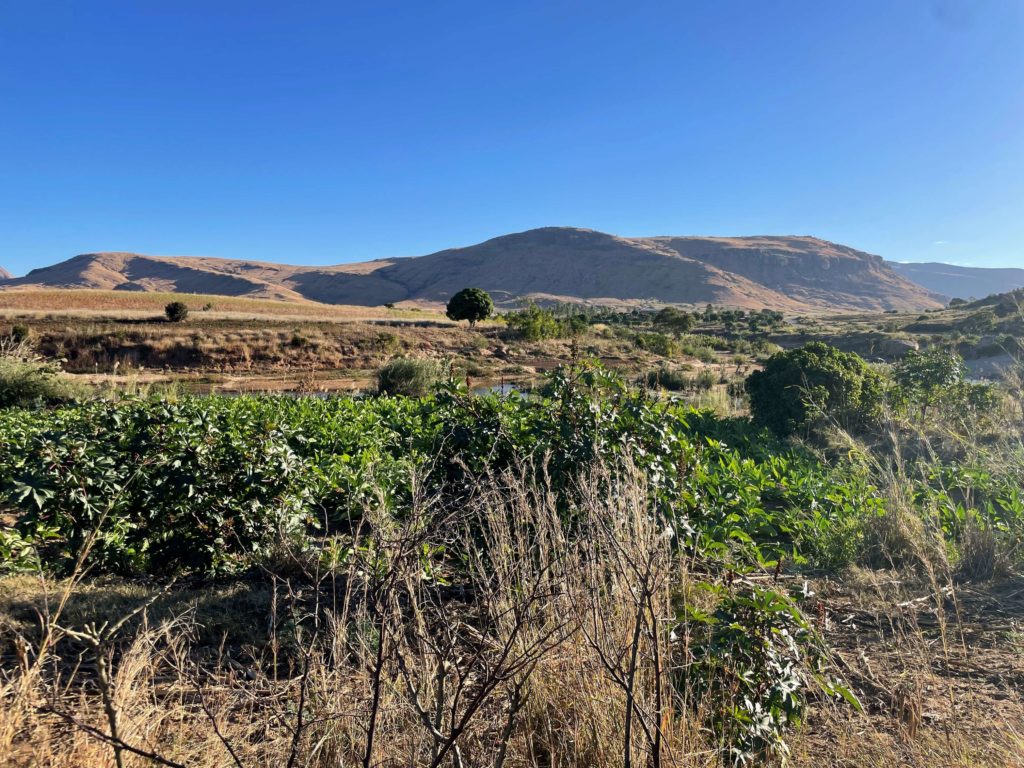
The hills and farmland of south Madagascar from the road
Arriving at a remote village marked the next phase of our journey. The village, which was more like a cluster of hamlets, lacked basic amenities such as water and electricity. My presence drew stares and whispers of “foreigner” in the local Malagasy language. The surroundings consisted of desert shrubland extending out in all directions. After introductions, we set up camp, pitching tents and preparing a simple meal of instant noodles and eggs. The night sky is incredible in Madagascar, once away from the lights and out into the bush, the entirety of the milky way is revealed in stunning clarity. Shooting stars are common, and I deeply regret missing a meteorite fireball that graced the sky the night after my departure.
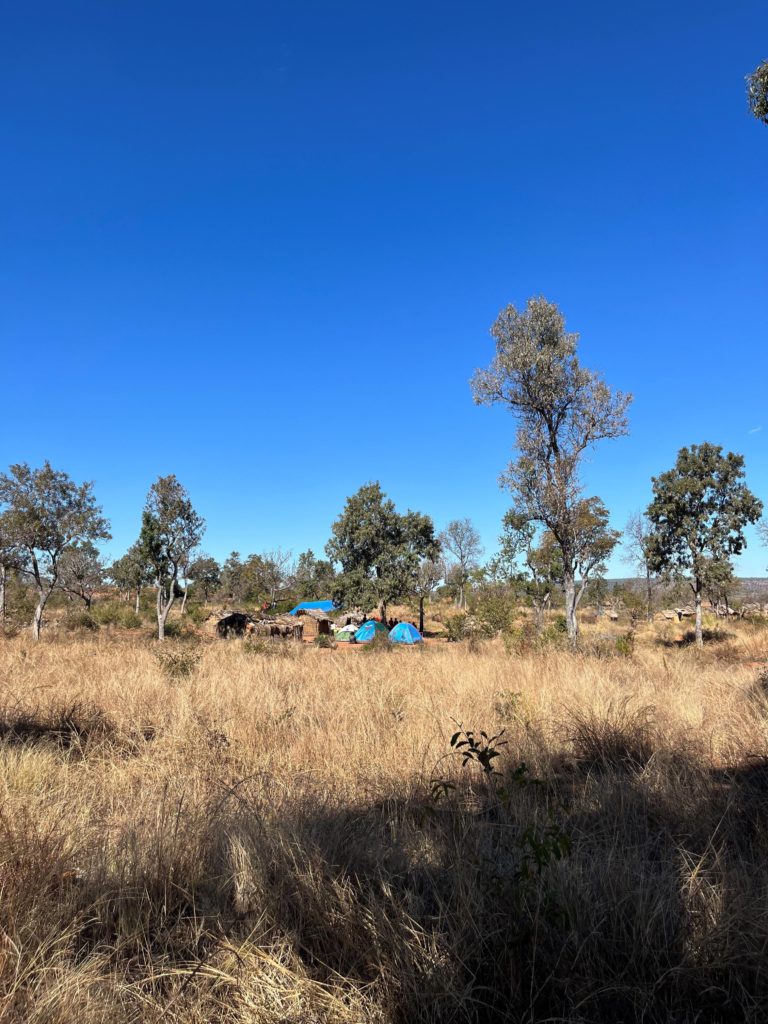
Our camp site
Dawn brought the challenge of unloading vehicles and equipment, a task that consumed much of the morning. A river crossing followed, necessitating the construction of a ramp to navigate the steep, muddy bank. Hours elapsed before we could reliably traverse the water. Pushing deeper into the wilderness, we reached an even smaller village that was the location of the mine.
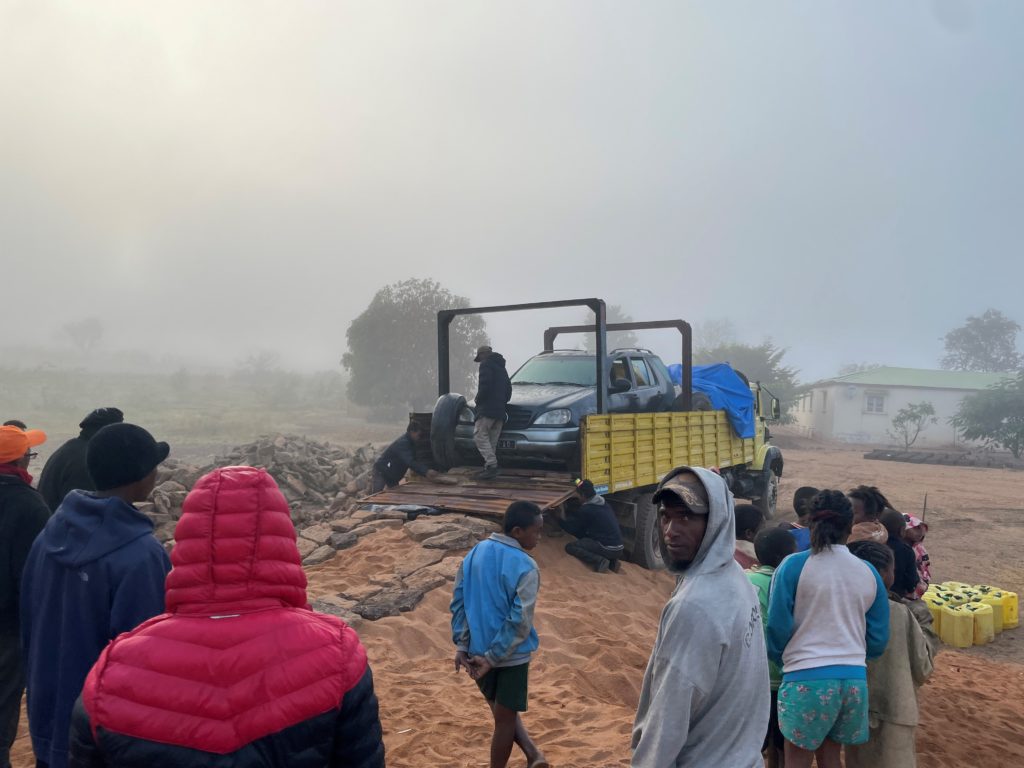
Unloading vehicles and equipment
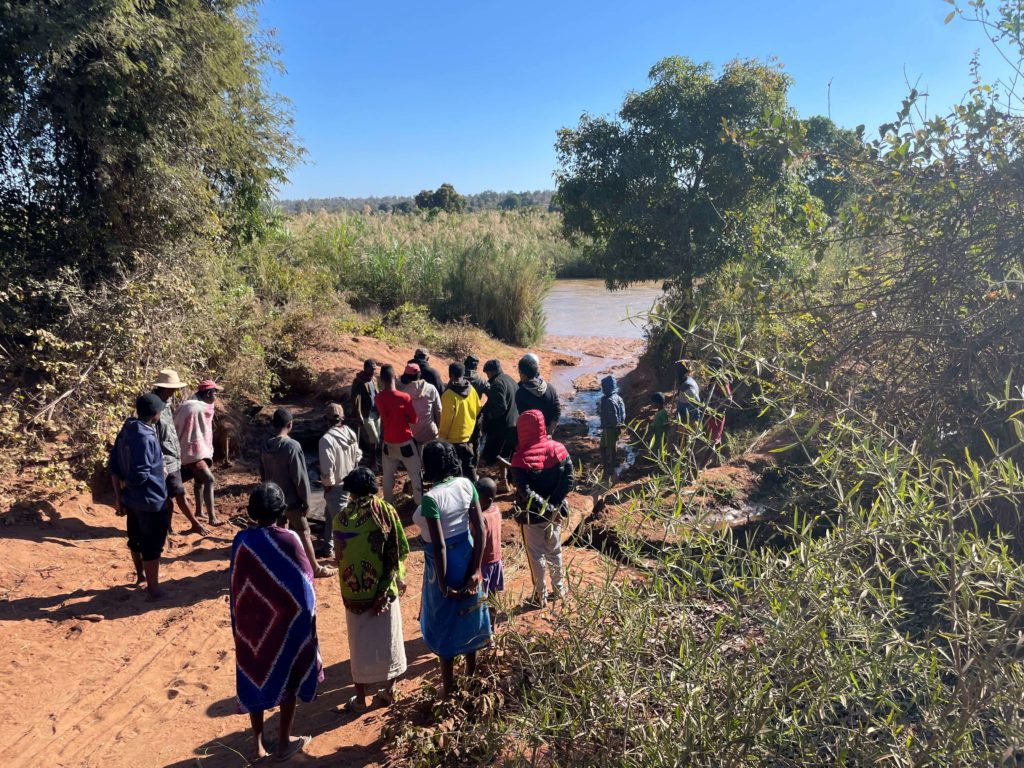
River crossing
Life in the village was unassuming, with inhabitants dwelling in modest huts crafted from mud, branches, and leaves. The villagers’ idle curiosity formed a constant backdrop. While Madagascar is predominantly Christian, ancient traditions persist in rural areas, involving ancestor veneration, magic, and witch doctors. I spotted one such figure in the village, covered in mud and adorned with objects fashioned from zebu horn. He at one point engaged in a phone call on an imaginary phone and appeared to have an altogether alternative view of reality. Despite his eccentricities, he commanded respect, though I chose to keep my distance.
The mining site, previously exploited with notable success, had experienced turmoil due to conflicts among Sri Lankan miners. Independent efforts yielded limited results, thwarted by inadequate equipment that prevented work below the water table. The excavation shafts descended 25 to 30 meters deep in this region. Negotiations fluctuated over the ensuing days, vacillating between resolution and renewed disputes. At one point, talk turned to a trust ritual involving slicing one’s hand open in order to form a blood bond. Simultaneously, a small team worked on getting our generator up and running, crucial for pumping water from the mine shafts. My role was largely observational, leaving me feeling rather ineffective. Nights brought the wanderings of strange characters, scorpions, giant cockroaches, and a melange of even stranger insects. All against the backdrop of the enchanting night sky.
A call from the local military chief marked a critical juncture. Rumours of a foreign miner with heavy equipment had wended their way to him and necessitated me taking a trip to his distant office, likely for extortion. With evening approaching and bandits posing a risk after dark, a rapid decision was imperative. Following consultation and advice from an authority in Tanna, we concluded that my speedy departure was the safest course of action. The mining team remained, committed to their tasks. Leaving felt disheartening after all the effort and anticipation, especially with production set to begin imminently. Yet, prioritising safety amidst conflicting interests was paramount.
Three days of travel returned us to Tana. En-route, we revisited Antsirabe to connect with a cutting workshop crucial to our operations, acquiring a few cut sapphires along the way. Back in the city, I engaged in more dealer meetings, procuring various gemstones before embarking on the lengthy and once again delayed journey back to the UK.
Since my return, the mine has undergone further developments. Relocating due to complications with locals, the team discovered a new area with a shallower, 3-meter gravel layer. After three weeks of intensive work, a modest but notable production is now ready for cutting. Anticipation builds as I look forward to returning, eager to witness the results first-hand.
Alistair McCallum FGA
+44(0)20 7405 2169

Marcus McCallum Ltd
Second Floor
62 Hatton Garden
London EC1N 8LR
info@marcusmccallum.com
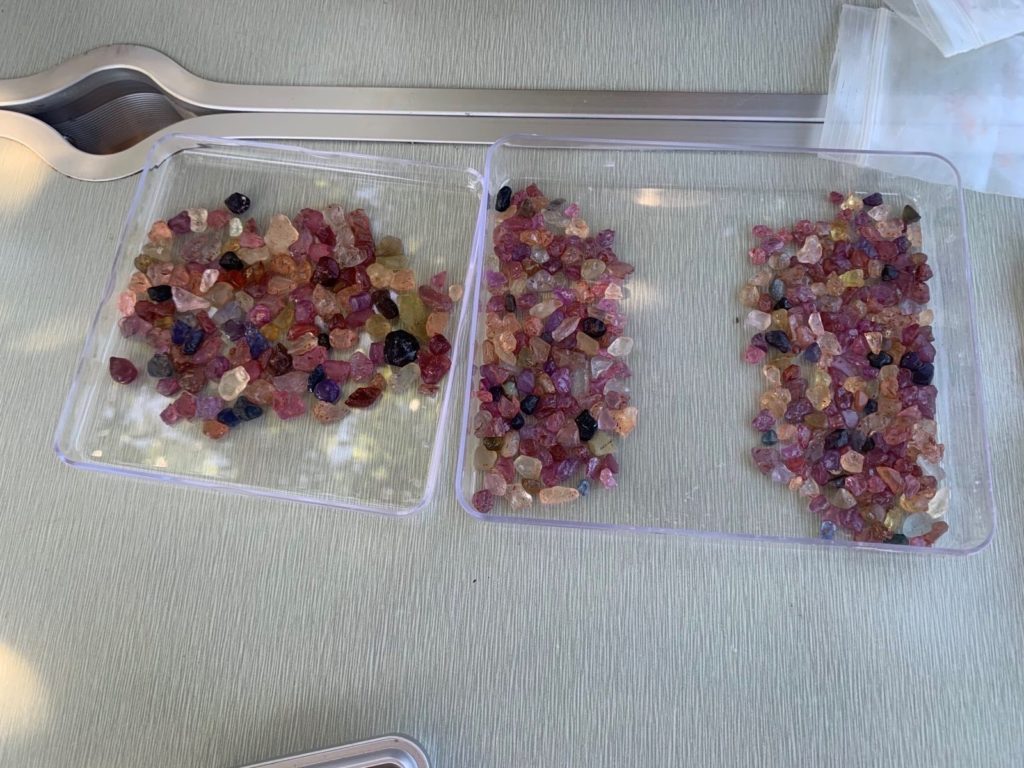
Sapphire production
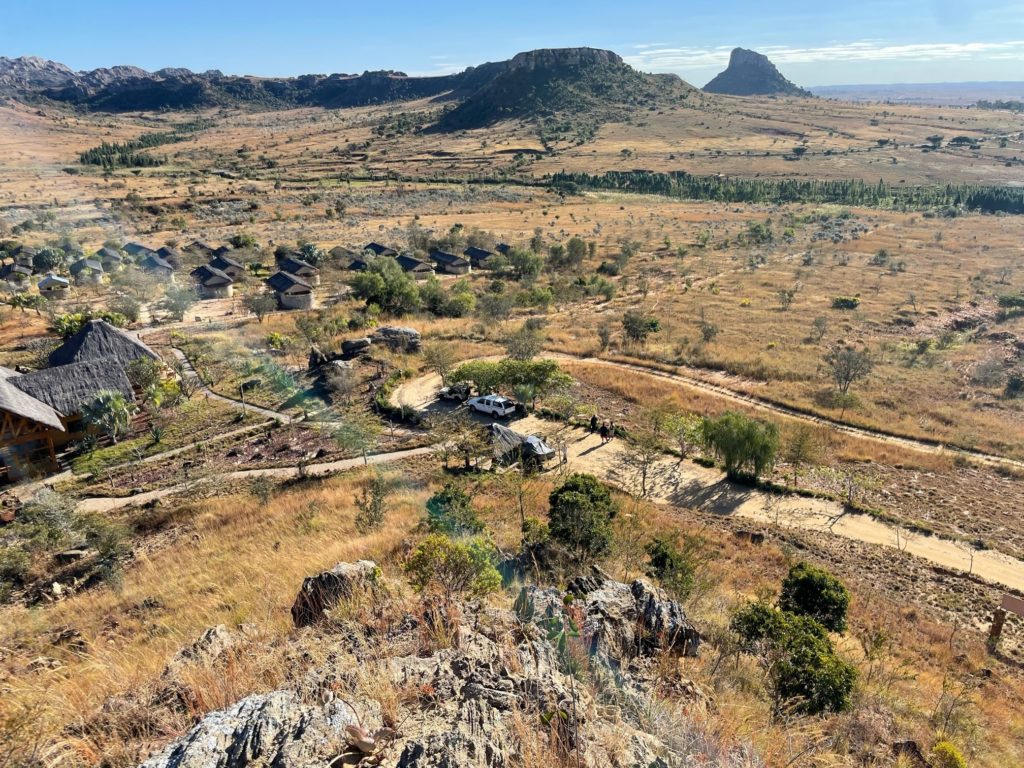
Incredible views from the edge of Isalo National Park
